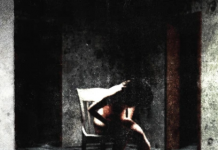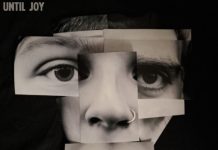Exhilarating is probably the best word to describe Sunday night’s performance by the Tim Garland Electric Quartet. This line-up contains four giants of contemporary jazz who have toured the world with this and other bands, although it barely did contain them, so full of energy, technique and novelty was their playing. The two sets included a large proportion of recent material with Middle Eastern influences as well as versions of older tunes, and the sheer technical accomplishment of each tune and each player clearly delighted devotees of jazz/world fusion in the audience.
Tim Garland himself played tenor and soprano saxes, and also introduced the bass clarinet on one number, an instrument which has a dark and sometimes rather sinister tone for more reflective pieces. This contrasted with the positively fiery fusion sound that came from his tenor playing, as he blew incredibly long and sinuous phrases across the urgent rhythm tracks created by the band. When he wasn’t blowing, he complemented the rhythm section with samples and hand percussion at a side station next to his woodwind instruments. Asaf Sirkis on drums and percussion is an established master of detailed intricate patterns, and he wowed the audience with his use of the udu among other hand percussion instruments. He also gave a masterful demonstration of the solkattu/konnakol, a system of rapidly chanted syllables used by Indian musicians to characterise complex rhythms. Jason Rebello on piano and keys showed us his discipleship of the great jazz and fusion players, adding intricate piano comping as well as muscular, crunchy solos. On keys he conjured up mysterious chords, pulsing bass figures and colourful pad textures.
Speaking as a guitarist myself, I was most drawn into Ant Law’s astonishing work on a range of conventional and unconventional guitars. Relatively young at 32 in this line-up, it is nevertheless clear why he got the gig. His technique is impeccable, deftly combining gentle fingerstyle chord work underneath the other musicians without stepping on their toes, and adding bass lines with his thumb. But when he uses a pick for solos, he deploys all the pyrotechnics of the rock giants like Steve Vai, the incisive phrasing of blues players like Stevie Ray Vaughan, and a kind of searching, probing intensity of his own that clearly portends much for the future. His has been an unusual trajectory, beginning as a rock and blues player, but clearly soon beginning to devour music and techniques from many quarters, and now forging his own path using special tunings and unusual electric and nylon string guitars to create a new landscape of guitar music.
The entire two sets were received with total pleasure by the audience and I found myself many times on the edge of my seat, neck strained to see the hands or faces of the musicians, as if to somehow catch a glimpse of their minds at work, algorithmically locked into each other’s musical intelligence. To be entirely balanced, there would be some who find such lengthy displays of virtuosity tiresome and rather soulless, and there were sections when I felt that the lack of a bass instrument of any kind was puzzling; there seemed to be something a bass player could have added. Perhaps the sound as a whole might have benefited from some less intense and frenetic sections, the better to pace the ears for the searing heat of the quartet’s principal sound. However, we don’t often get to see performances like this in front of Manchester Town Hall, and it is a virtue of MJF to bring this calibre of music to the heart of the city.








